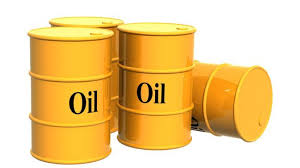
Houston — 2019 was a year of contraction in the Texas upstream oil and gas economy, according to the Texas Alliance of Energy Producers’ Texas Petro Index.
The index achieved its cyclical peak in February and fell for the next 10 months to finish the year at 193.6 in December, down 9.1% from the previous year. Through December, the TPI lost about 9.4% of its value since the February cyclical peak.
“The TPI was actually first knocked off its growth track in the fourth quarter of 2018 with sharp declines in crude oil prices, but then recovered in early 2019 before embarking on a sustained decline for the balance of the year,” said Karr Ingham, Alliance Petroleum Economist and creator of the TPI.
According to Ingham, the year was characterized by lower wellhead prices for oil and gas compared to 2018, a declining rig count, decreases in drilling permits issued, and fewer well completions.
Oil industry employment is also down, although oil and gas “extraction” employment continued to increase through the end of 2019, with the steepest declines surfacing in the in the “support activities” sector that includes oilfield service companies.
“Unlike the previous two contractions, crude oil prices actually stabilized in 2019, helping to sustain higher levels of E&P activity than would otherwise be the case in a sharply declining price environment, and this helped to sustain industry employment on the operating/producing side of the industry employment ledger,” Ingham said in a written statement.
Ingham added that from 2008-2009, oil prices peaked and then fell by over 70% in just eight months. In 2014, the oil price peaked in June before sliding into a 20-month, roughly 80% decline (in terms of daily prices).
“In 2019 the annual average WTI posted price was down by about 13% compared to 2018 but following the sharp decline in the fourth quarter 2018 prices recovered to above $50 and were steady for the balance of the year,” Ingham continued.
“It was simply a year of stable $53-54 oil, and while that’s obviously not the recipe for industry expansion, one can easily imagine a scenario much worse because we’ve seen it the past two downturns.”
The statewide rig count averaged 463 in 2019, down 10% year over year. The December monthly average rig count of 406 was down YOY by over 23% and the number of issued drilling permits fell by 12% for the year, while oil well completions were off by 18%, Ingham said.
“At the heart of the issue are petroleum markets that are simply well-supplied, negating the need for higher prices that would in turn push activity levels upward,” said Ingham. “Even as prices, the rig count, and well completions have declined production has continued to increase,” he said, adding that Texas’ oil production grew by 15%, on top of a 26% increase in 2018.
The state’s oil production continued to set records, exceeding the 5 million barrel per day mark in July, and topping 1.85 billion barrels for the year. Texas producers contributed 41% of U.S. national oil production last year, with daily production at year-end making up 42% of U.S. total production, Ingham said.
“Declining prices and activity levels will surely affect Texas production, and in fact have already done so by slowing the rate of growth in statewide crude oil production,” Ingham said. “But will production peak in the near term and decline by a significant degree, which is the implied outcome necessary to move crude oil prices higher? Recent history says ‘no’.”
In the 2014-2016 downturn, daily production in Texas fell by 13-14% under pressure from 75-80% declines in oil prices, a 75% dip in the rig count, a 70% decline in issued drilling permits issued, and 115,000 lost industry jobs in the state, Ingham said.
“Current conditions are not nearly so severe, and $50-plus crude oil pricing suggests the maintenance of high levels of production for the foreseeable future.”
*Bertie Melinda Taylor, email [email protected] – Rigzone



